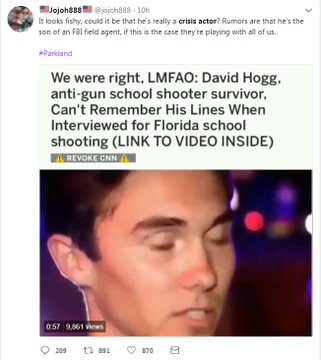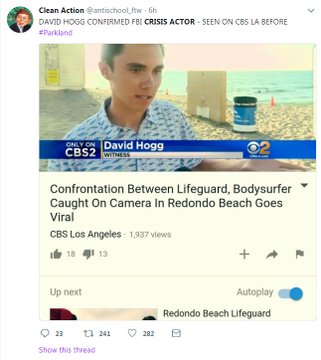 |
Emma
MacDonald, center, cries during a vigil for the victims of the Boston
Marathon explosions at Boston Common, Tuesday, April 16, 2013.(Photo: Julio Cortez, AP)
|
When Emma MacDonald saw the tragedy unfolding at a high school in Florida, she felt a sense of dread.
She knew what would come next: the same lie that's been spreading for years.
It's like clockwork. New life is given to the hurtful conspiracy with each tragedy. Each time MacDonald, of Boston, feels to blame because it's her face that is used to promote one of the more popular conspiracy theories over the last few years.
"Enough is enough," said MacDonald, 25. "This needs to go away."
It started with a photo of MacDonald breaking down in tears during a vigil after the 2013 Boston marathon bombing. Conspiracy theorists took the image and pasted it alongside other crying women after mass shootings in Newtown, Conn., Aurora, Co. — and the latest addition in Parkland, Fla.
All are white, thin and brunette. Most are crying. The aim is to try to prove those grieving after the tragedies were actually the same person and a staged actress paid to respond to crisis around the county. The collage has been used after the Manchester Arena bombing and a 2015 shooting at a college in Roseburg, Oregon that left 10, including the gunman, dead.
"When you're short on crisis actors," the photo is labeled, which quickly went viral on social media after last week's shooting at Marjory Stoneman Douglas High School.
The post didn't include that the woman added from Parkland, Fla. wasn't a student at all but actually CBS producer Gisela Margarita Perez, who was posing for a photo with student survivors before an interview.
 |
| Emma MacDonald (Photo: Courtesy of Emma MacDonald) |
Conspiracy theories are nothing new. But the internet and social media has made them even more accessible.
Conspiracy theories:Here's what drives people to them, no matter how out there The
madness started within months after the photo was taken, MacDonald
said. She didn't know anyone who died in the Boston bombings but
attended a vigil a day after the April, 15, 2013 attack.
She got emotional after seeing a young boy place a flower down during the vigil and started crying.
An Associated Press
photographer captured the moment and it ended up in newspapers across
the country, making her a target of conspiracy theorists.
"I
feel like I was very vulnerable in that image. I was sobbing
uncontrollably and every time I see it, I'm right back there and relieve
those moments," MacDonald said. "I just feel awful for the victims and
families of the other women because they lost loved ones and still have
to deal with this madness. It's just exploiting a tragedy."
Friends, bosses and acquaintances have all reached out to her over the years after seeing the theories online. At first, she said, she tried to report those who were posting the false narratives but it became more of an uphill battle after each tragedy.
Friends, bosses and acquaintances have all reached out to her over the years after seeing the theories online. At first, she said, she tried to report those who were posting the false narratives but it became more of an uphill battle after each tragedy.
"Every time it's like what do I do? Do I report every
single blog post and try to debunk every theory?" she said. "Part of me
genuinely didn't even want to call attention to it because that's just
feeding the trolls."
She reported one of the
incidents Tuesday and hopes changes to Facebook and other social media
platforms will help prevent against the fake stories from spreading as
quickly as they have in the past.
But
social media companies have continued to take heat in the aftermath of
tragedies as critics call for filters to stop the spread of conspiracies
that mislead the public and compound the pain for victims of violent
attacks.
YouTube apologized Wednesday
after a video attacking a survivor of the Florida high school shooting
was at the top of its "trending" tab. The video has since been deleted.
MacDonald
says there has to be some way of stopping the flow of misinformation
and hopes people will verify information before sharing it.
"I'm
just some random girl in some random photo and I hate it," she said.
"My face is used as a tool to these people. It's used as a distraction
to what's really happening — the grief these people are feeling and the
solutions that can help prevent against this from happening again."
Follow Christal Hayes on Twitter : Journo_Christal
https://www.jsonline.com/story/news/2018/02/21/conspiracy-theory-wont-end-enough-enough/360521002/
[Editor's note: space below provided for your children to draw and color.]
[Editor's note: space below provided for your children to draw and color.]








No comments:
Post a Comment